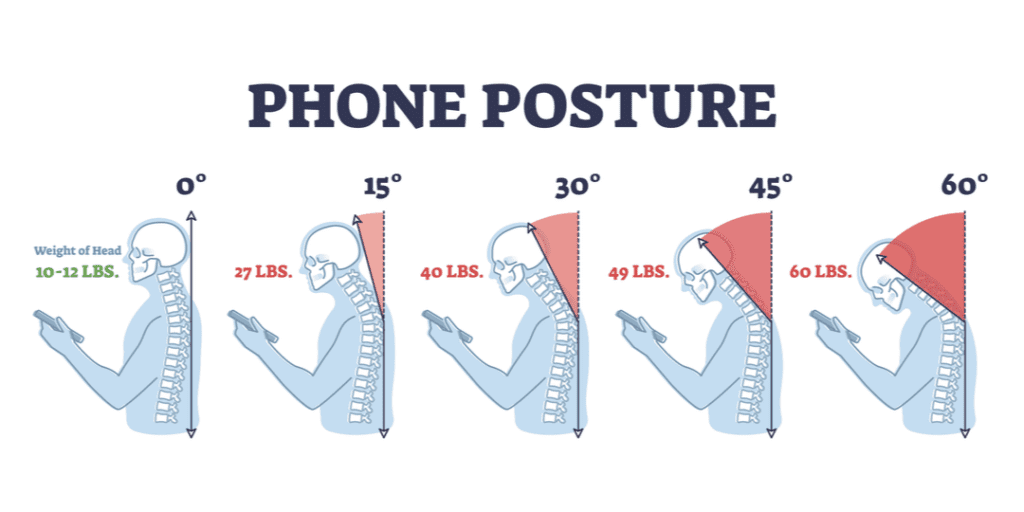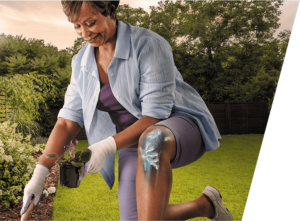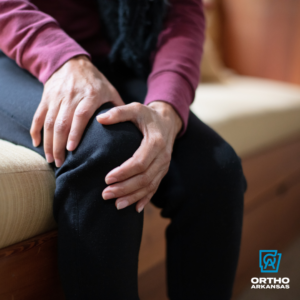There are 360 different joints throughout the adult human body, connecting bones and aiding movement and locomotion.
These various joint types perform different functions, from pivoting our necks to curling our toes. Most of us think of the knee, hip, or shoulder when we hear the word “joint”. In fact, these are the most commonly treated areas, including the elbow.
However, some of the most important joints to keep healthy are found in the body’s core.
Take care of your body’s core
The body’s core is the spinal column. It is the central tower that connects all of our other parts. Composed of vertebrae (bones), discs and nerves, it supports the body and facilitates walking, bending, and twisting—with the help of the body’s muscles. Facet joints are the important connectors of the spinal column that also protect the spinal cord running through these links.
Because our back and spine do so much for us, our wellbeing relies upon keeping our spine in line.
Sitting Disease or Text Neck?
Neck and back pain, aside from trauma or illness, often stems from overuse. Overuse causes include not only lifting too much, but also sitting down for prolonged periods, poorly fitting backpacks, or the way we use our tech.
Sitting for prolonged periods, which tends to be the norm now with the abundance of sedentary professions and our downtime screen time obsessions, has created new modern era conditions: sitting disease and text neck.
Sitting Disease
It may be surprising that a non-physically active lifestyle causes overuse that may lead to neck and back discomfort. Although it relaxes the mind, the sitting position stresses muscles and discs—and also restricts the blood flow of the buttocks. This results in tightness of the hips, pressure on the gluteus maximus, and a multitude of conditions beyond orthopedic aches and pains.
Symptoms: Neck & back pains and injury, compromised posture, chronic pain.
Combat Sitting Disease
- Stand up more. Take phone calls standing up or while folding laundry.
- Set an alarm throughout the day to remind you to stand up, move around, or do some quick stretches.
Surprisingly, sitting isn’t always the culprit, but rather how you sit. Sitting on the floor to work, relax, or watch your favorite shows actually uses muscles.
Text Neck
Our necks are not designed for using tech, like our phones. With the average human head weighing 10-12 pounds, the degree of angle that we hold our head matters—a lot.

At the typical 60 degree angle we tend to migrate to when using devices, our necks are withstanding the equivalent of 60 pounds of force.
Symptoms: Stiffness, persistent pains in the neck, decreased range of motion.
Combat Text Neck:
- Raise your phone to eye level.
- Take breaks.
Learn a few neck stretches and do them daily.
General Spine Safety Tips
Although accidents will happen, a few precautions can be taken to reduce some common spinal injury risks.
Wear a seatbelt everytime. Traffic accidents are the most common cause of spinal trauma for individuals ages 18-35.
Wear protective sports gear, like helmets.
Keep spaces tidy to avoid slips. Indoor and outdoor spaces have different hazards from tripping over lamp cords to slipping on ice or water. Clean spaces are one simple way to avoid injuries from falls, which is the leading cause of spinal injury for those ages 60-80. In fact, falls account for 60% of traumatic spinal cord injuries in the older population.
Practice good posture. When at work, sit in a properly positioned chair and desk. When at home, take breaks from looking at your screens. Hold your phone up instead of looking down.
Move a little every day. It’s true: if you do not use it, you lose it. Move a little everyday and take breaks throughout the day to stay limber.
Diagnose the discomfort
Living with chronic discomfort in the neck and back is difficult; it impacts the ability to perform essential everyday activities from dressing to working—even sleeping. Unfortunately, many individuals tolerate aches longer than necessary, worsening treatable conditions.
The best time to seek diagnosis and treatment for discomfort is now. More treatment options are available to those who seek treatment as soon as possible after trauma or the onset of the condition. There are many non-surgical, intervention and rehabilitative options to treat spine, neck, and back conditions.














